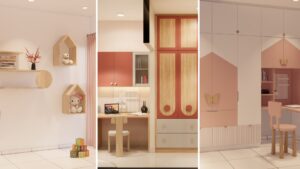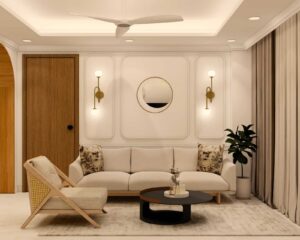Designing your kitchen is more than just choosing the right color for your walls and cabinets. It involves careful planning of space, functionality, and aesthetics to create a kitchen that suits your needs and lifestyle. Here’s a comprehensive guide to help you plan your kitchen interiors like a pro.
Assess Your Kitchen Space
Before diving into design specifics, evaluate the space you have. Consider the shape and size of your kitchen. This initial step will influence all your subsequent design decisions, from layout to storage solutions.
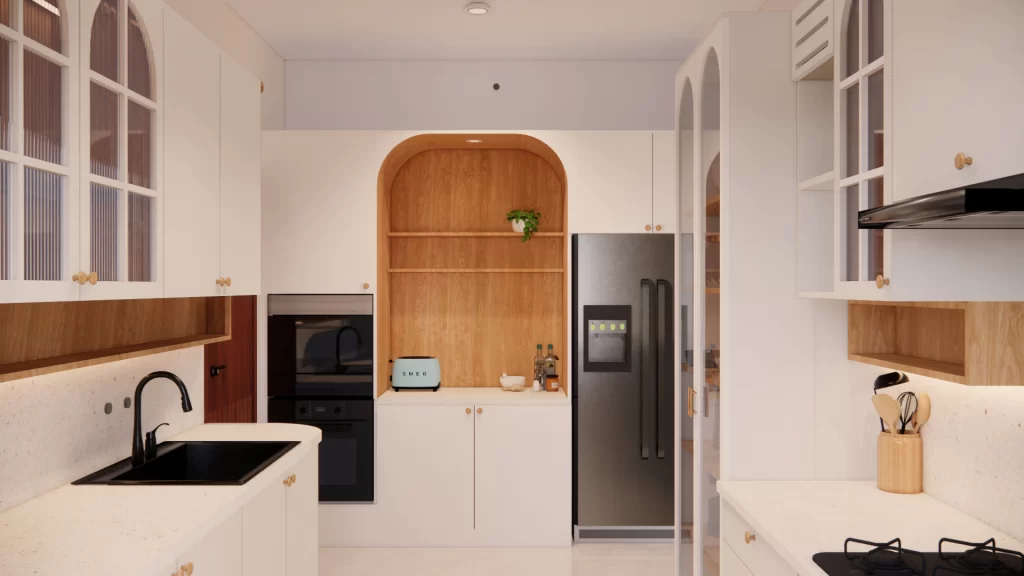
Understand Kitchen Layouts
The layout of your kitchen is crucial for functionality and efficiency. Here are the six basic types of kitchen layouts:
L-Shaped Kitchen: This layout features cabinets along two perpendicular walls, forming an ‘L’ shape. It’s ideal for medium-sized kitchens, providing a smooth workflow and ample counter space.
U-Shaped Kitchen: Cabinets and appliances are arranged along three walls, creating a ‘U’ shape. This layout is perfect for larger kitchens, offering extensive counter space and storage, and is great for families who cook together.
Parallel Kitchen: Also known as a galley kitchen, this layout has cabinets and appliances on two parallel walls. It’s suitable for small to medium-sized kitchens, optimizing space and functionality.
Straight Kitchen: A single-wall layout is perfect for compact spaces like studio apartments or small homes. All appliances and cabinets are aligned along one wall, making it space-efficient and straightforward.
G-Shaped Kitchen: An extension of the U-shaped layout, this includes an additional partial fourth wall or peninsula. It provides extra counter space and storage, ideal for larger kitchens.
Island Kitchen: Incorporating a central island provides additional workspace, storage, and a casual dining area. This layout suits large, open-plan kitchens.
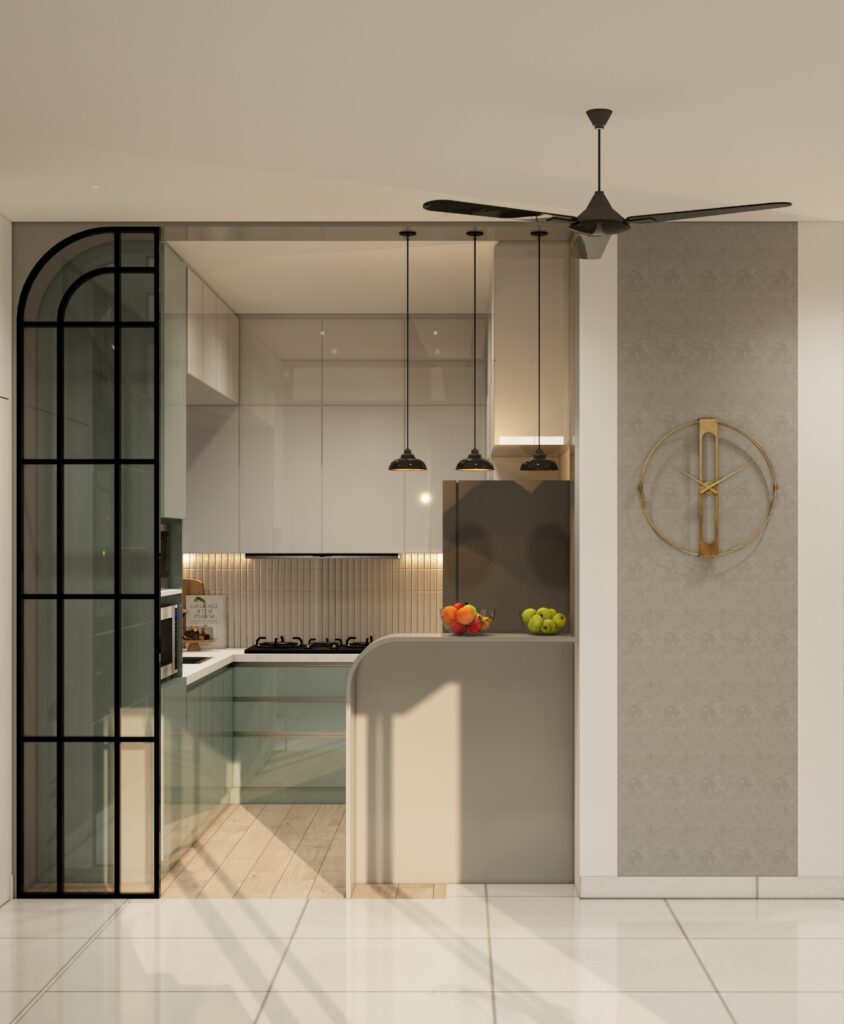
Choose Your Kitchen Style
Your kitchen should reflect your personal style and harmonize with the rest of your home. Here are some popular kitchen styles to consider:
Modern Kitchen: Sleek lines, minimalist design, and high-tech appliances define modern kitchens. Use materials like stainless steel, glass, and high-gloss finishes.
Traditional Kitchen: Rich, warm colors, classic cabinetry, and ornate details characterize traditional kitchens. Incorporate natural materials like wood and stone.
Transitional Kitchen: A blend of traditional and modern styles, transitional kitchens offer a balanced, timeless look. Combine modern appliances with classic cabinetry and neutral colors.
Rustic Kitchen: Emphasize natural materials, warm colors, and a cozy feel. Use reclaimed wood, stone countertops, and farmhouse sinks for a rustic charm.
Industrial Kitchen: Inspired by urban lofts, industrial kitchens feature exposed brick, metal surfaces, and utilitarian fixtures. It’s a bold, edgy style perfect for open spaces.
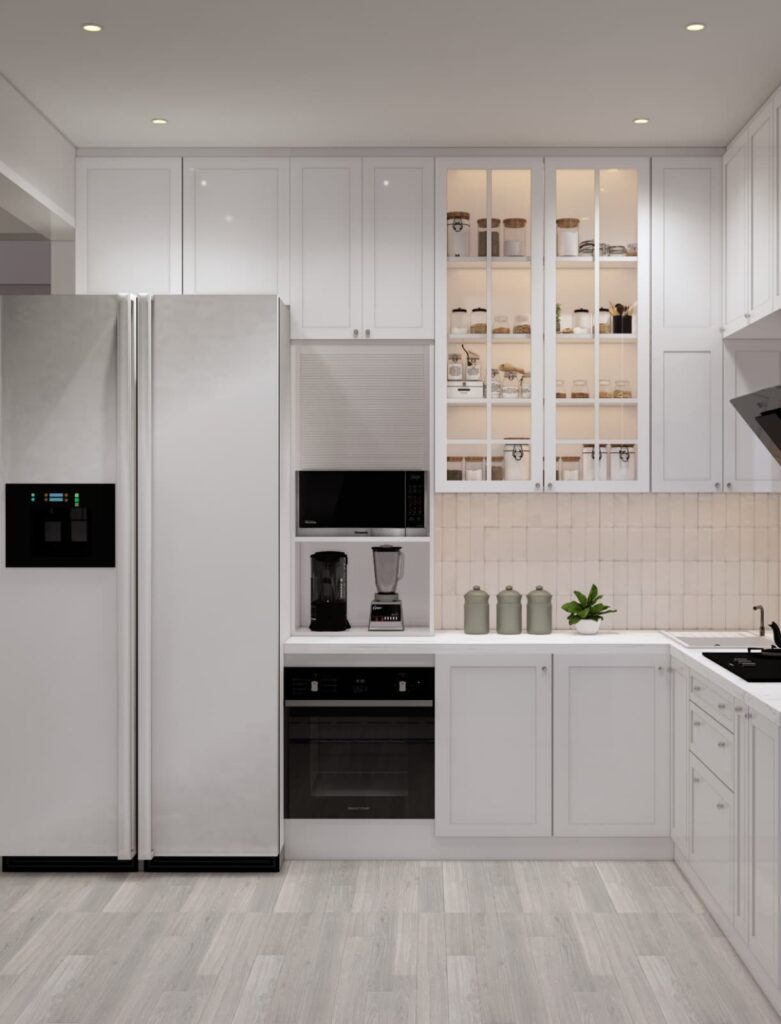
Optimize Storage Solutions
Efficient storage is key to a well-functioning kitchen. Consider the following storage options:
Cabinets and Drawers: Use a mix of deep drawers and cabinets for pots, pans, and pantry items. Soft-close mechanisms add a touch of luxury.
Pull-Out Shelves: These make it easier to access items in deep cabinets, maximizing space and convenience.
Vertical Storage: Use tall cabinets and open shelving to store items you don’t use daily. This keeps the countertops clutter-free.
Corner Solutions: Lazy Susans or pull-out trays make use of awkward corner spaces, ensuring no area goes to waste.
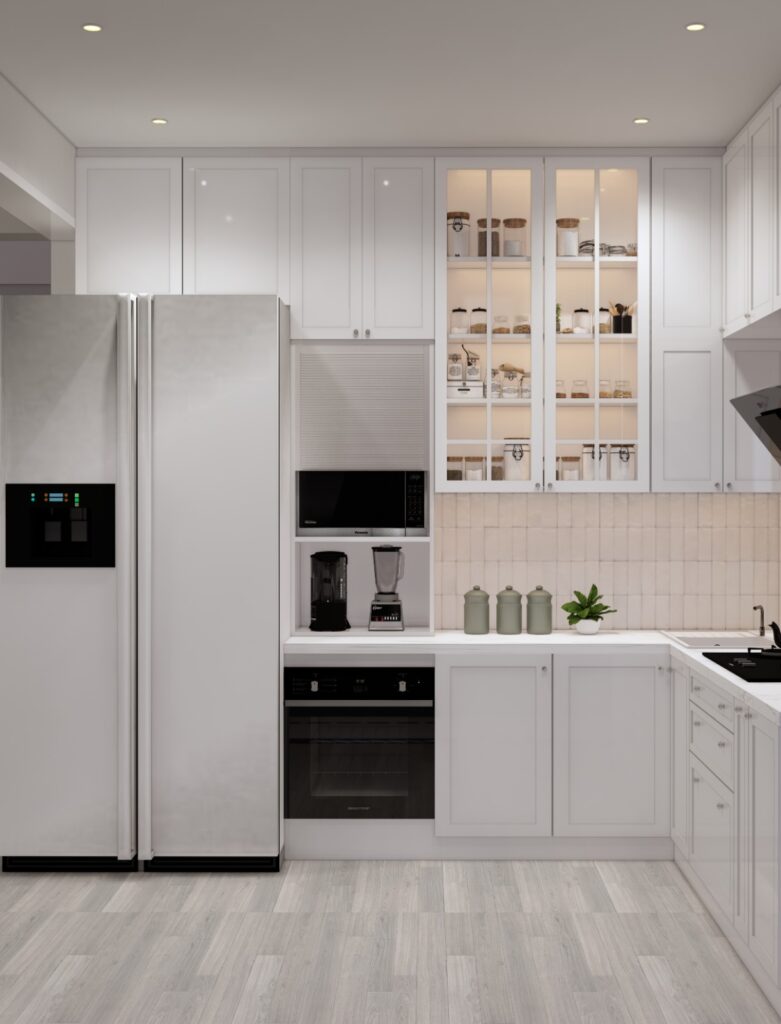
Select the Right Countertops
Countertops are both a functional and aesthetic component of your kitchen. Consider these popular materials:
Granite: Durable and heat-resistant, granite offers a timeless appeal with its natural stone variations.
Quartz: Engineered quartz is non-porous, durable, and available in a wide range of colors and patterns.
Marble: Elegant and luxurious, marble requires regular maintenance but adds a high-end touch.
Laminate: An affordable option available in various designs, though less durable than other materials.
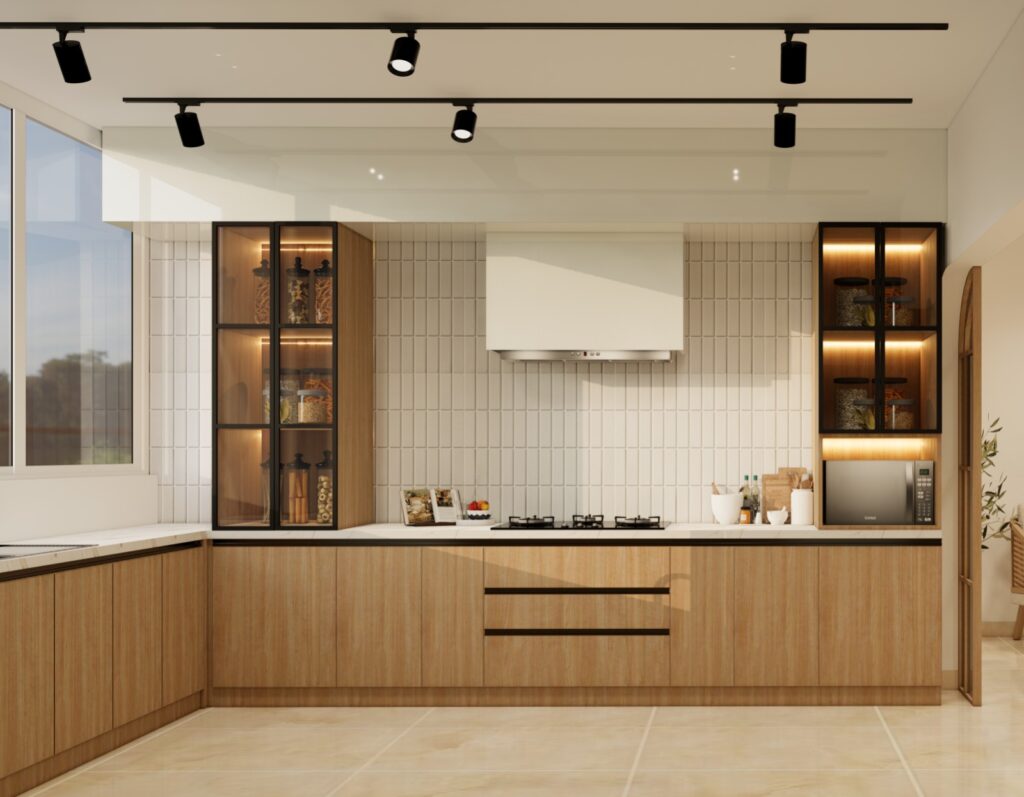
Choose the Right Lighting
Lighting plays a crucial role in kitchen design, affecting both functionality and ambiance. Incorporate these types of lighting:
Ambient Lighting: General lighting that illuminates the entire kitchen. Use ceiling lights or recessed lighting.
Task Lighting: Focuses on specific work areas like countertops and stovetops. Install under-cabinet lights or pendant lights over an island.
Accent Lighting: Highlights architectural features or decor elements. Use strip lights or spotlights for this purpose.
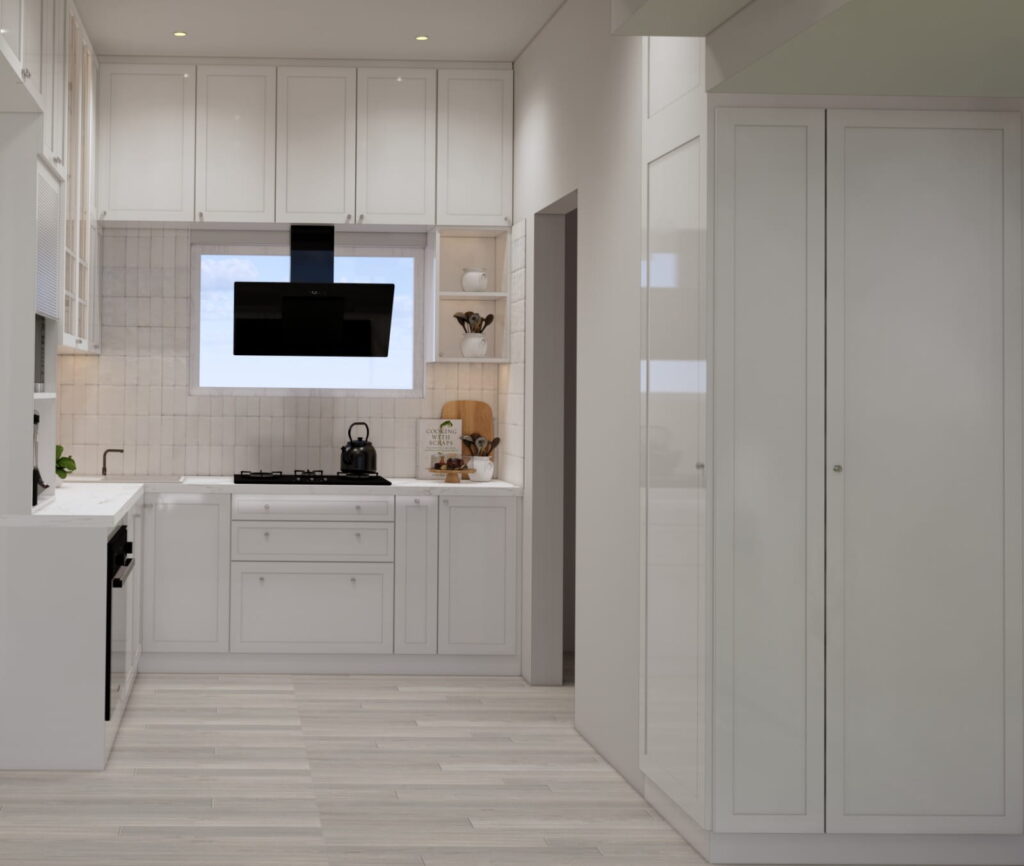
Incorporate Functional Design Elements
Consider adding these functional design elements to enhance your kitchen’s usability:
Kitchen Island: Provides additional workspace, storage, and a casual dining area. It’s versatile and can house a sink, stovetop, or seating.
Breakfast Counter: Perfect for quick meals and casual dining, a breakfast counter can be an extension of your island or a standalone feature.
Multifunctional Furniture: Items like an appliance garage or a drop-down dining table save space and add convenience.
Pantry: If space allows, a pantry is invaluable for storing groceries and large containers, keeping your kitchen organized.
Plan for Appliances and Ventilation
Choose appliances that fit your needs and match your kitchen’s design. Consider the size and placement of major appliances like the refrigerator, stove, and dishwasher. Adequate ventilation, such as a range hood, is essential to keep your kitchen fresh and free from cooking odors.
Budget and Timeline
Set a realistic budget and timeline for your kitchen renovation. Prioritize essential features and be prepared for unexpected costs. A well-planned budget ensures you get the best value without compromising on quality.
Final Touches
Add personal touches to make your kitchen feel complete. Decorate with items like potted plants, artwork, or stylish kitchenware. These details reflect your personality and make the space uniquely yours.
Planning your kitchen Interior Design involves a blend of functionality, aesthetics, and personal style. By carefully considering your space, layout, storage, and design preferences, you can create a kitchen that is both beautiful and practical. Happy designing!

